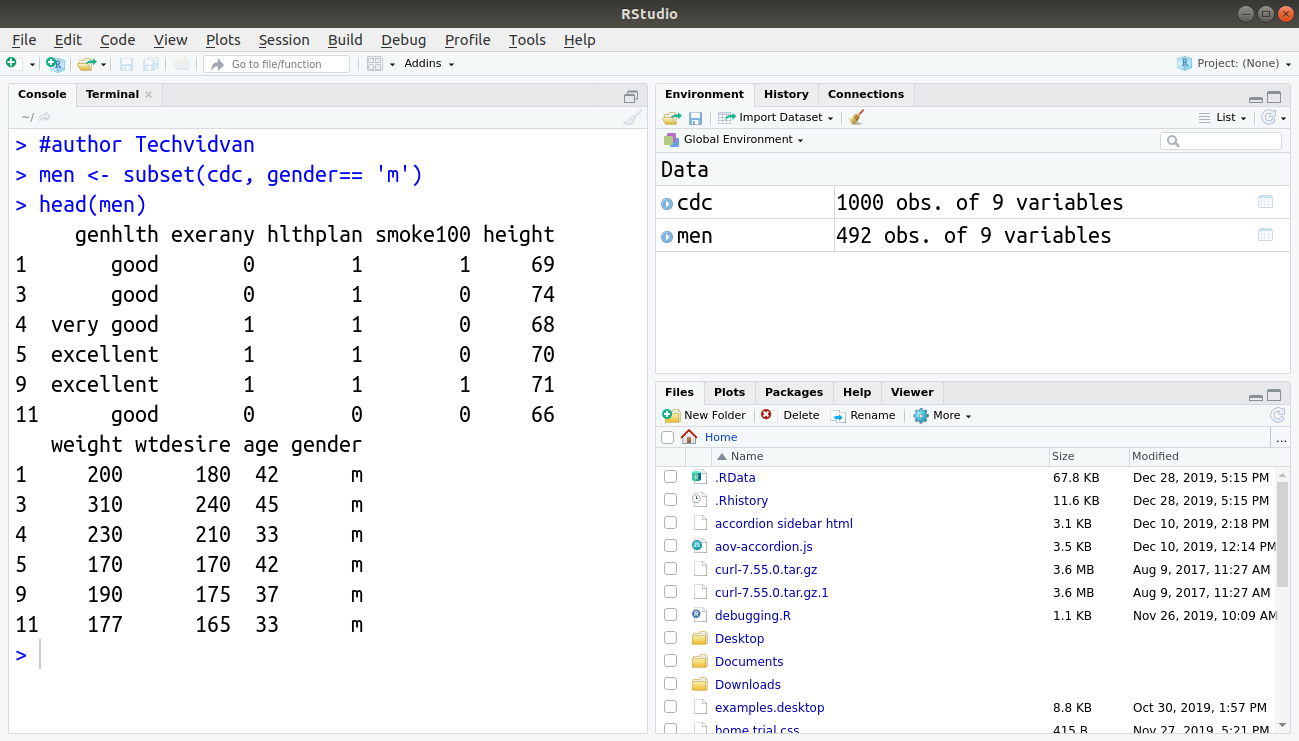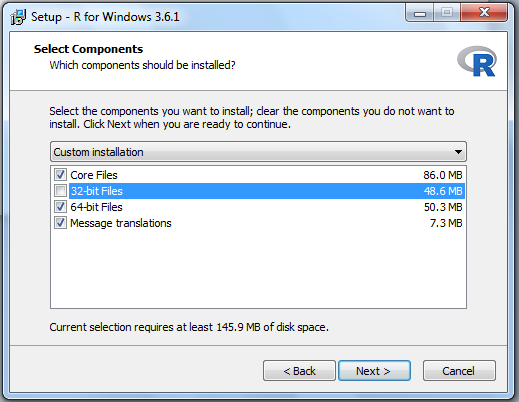

The command palette is a handy way of accessing all sorts of VS Code capabilities by typing instead of pointing and clicking at menus. You can also get to the settings UI using Visual Studio Code’s command palette. You can then search for “bracketedPaste” and click to enable it. (The other option is editing the underlying settings JSON file.) To get to the settings UI, go to either File > Preferences > Settings on Windows or Code > Preferences > Settings on Mac. The easiest way to change a VS Code setting is to open up the settings user interface. That means I need to go into VS Code settings and turn that setting on if it’s not already enabled. The vscode-R extension instructions also said I needed to “enable config r.bracketedPaste”. If you don’t, both jsonlite and rlang can be installed from CRAN with install.packages(). I already have those on my system, but you’ll want to make sure you do, too. The vscode-R extension’s wiki also recommends installing two other R packages, by the way: jsonlite and rlang.
R STUDIO COMMANDS INSTALL
To install vscode-r-lsp, I can either go back to my Visual Studio Code window and install it from the VS Code extensions marketplace or I can click the install button on the vscode-r-lsp web page. Languageserver is a regular R package, so I can go back to RStudio or an R terminal and install it the usual way, with install.packages("languageserver"). (Update: vscode-r-lsp capabilities have now been integrated into the vscode-R extension, so you no longer need to install it separately.) These command IDs can be used in RStudio API calls such as rstudioapi::executeCommand.There are a couple of other recommended installations for the vscode-R extension: languageserver and vscode-r-lsp. The following table enumerates all of the commands currently supported by RStudio.

13.2.4 Installing the Jupyter Notebook Plugin.12.2.5 Disable Multiple Session Support.
R STUDIO COMMANDS PRO
12.2.4 Disable RStudio Server Pro Home Page.12.2.3 Enable Callbacks from RStudio to Host Page.9.5.11 Troubleshooting Floating Licensing.9.5.9 License Server Downtime Tolerance.9.5.4 License Server Offline Activation.9.5.3 License Server Hardware Requirements.9.5.2 The RStudio Server Pro License Server.6.4.3 Disabling Use of Multiple Versions.6.4 Using Multiple Versions of R Concurrently.6.3.3 User Configurable Default Version.6.3.2 Default Version Per User or Group.6.3 Configuring the Default Version of R.


3.6.4 Configuring your Identity Provider with RStudio.3.6.3 Configuring RStudio as a Service Provider.3.5 Restricting Access to Specific Users.3.4.2 Diagnosing PAM Authentication Problems.3.3.4 Migrating to Proxied authentication.3.3.3 Migrating from Proxied authentication.2.1.8 Changing the admin status of a user.2.1.7 Adding users to the user database.2.1.3 Configuring the Run-Time Data Directory.2.1.2 Alternate Configuration File Location.


 0 kommentar(er)
0 kommentar(er)
